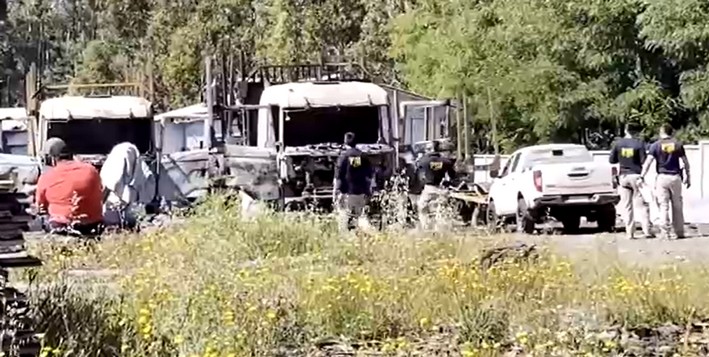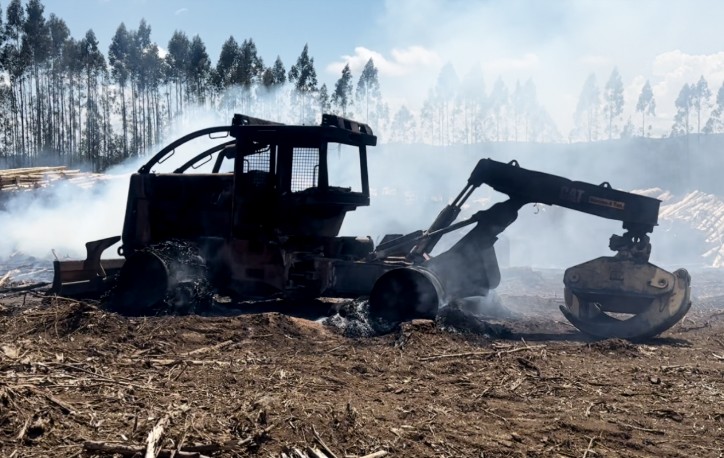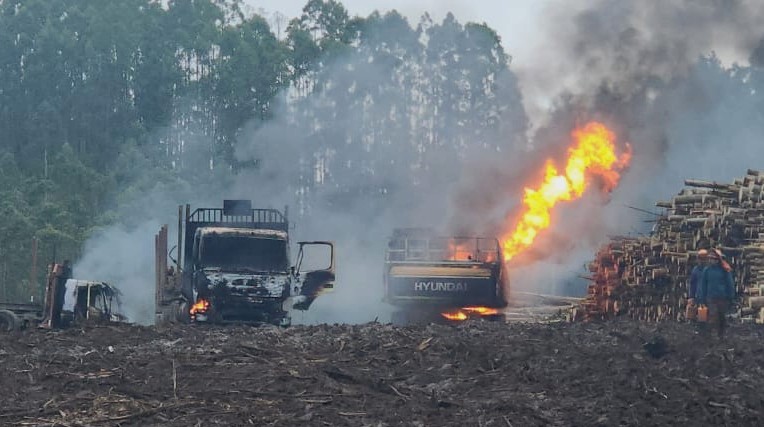Over 200 People Regain Access to Drinking Water at Home After Rural Fires
During the February wildfires, the flames destroyed the facilities that transported water from a spring to the rural area of Choroico in Nacimiento, Biobío Region, leaving 60 families in the area without access to this essential resource until yesterday.
This is because the households in the area had their water supply restored thanks to the joint efforts of the community, the local municipality, and CMPC. The solution arrived just ahead of World Water Day, which is celebrated today.
"The water from the estate is life for us—it allows us to irrigate our plants and crops, care for our animals, and sustain ourselves as people. It’s vital for human life. We are deeply grateful for this water," said Margarita Novoa, president of the Choroico Neighborhood Council in Nacimiento.
The rural fires that struck south-central Chile during the summer burned over 3,000 meters of hoses in the area. These hoses played a critical role: delivering drinking water for human and productive use to more than 200 people.
Installed over 20 years ago from a spring at CMPC's Santa Adriana Estate, they navigated the terrain's slopes to reach each of the 60 homes in the area.
Thus, the fire—which also consumed the forests of Santa Adriana—left over 200 people without drinking water in their homes until yesterday. However, in observance of World Water Day (celebrated today) and with the support of the CMPC Rebuild program—an initiative launched after the fires to directly assist thousands of affected individuals—the 3,000 meters of lost hoses were reconstructed and reinstalled.
"It was a huge loss, but CMPC was there, working with firebreaks and everything until it was no longer possible," Margarita recalled about the fires. "Right away, they promised to restore the hoses. The municipality also contributed machinery and transportation to bring them in. Now, thank God, everything is installed," said the neighborhood association president.
Meanwhile, Nacimiento Mayor Carlos Toloza stated: "We are very pleased because, less than a month after the fire, 60 families already have a water solution. After a meeting with residents and CMPC, we agreed to purchase the hoses and install them together in record time."
Ignacio Lira, CMPC Forests Public Affairs Manager, added: "Within our estates, there are many water sources that supply neighboring areas, and unfortunately, many were damaged during this fire season. That’s why one of our top priorities is restoring water access to nearby communities. Today, we’re in Choroico, where we have a High Conservation Value Area (HCVA) that provides water to over 60 neighboring families." Lira also explained that the company is conducting "restoration and rehabilitation work on infrastructure to secure water for this community, along with damage mitigation efforts such as building dikes with the community to minimize erosion impacts during winter rains."
Thanks to CMPC Rebuild, over 383 containment dikes are being constructed—116 in the first phase—along with soil recovery efforts in fire-ravaged areas left without vegetation. Additionally, since Santa Adriana is an HCVA, a native tree replanting plan has been implemented.
CMPC’s HCVAs are critically important for the company and neighboring communities, as they preserve and enhance high biological, sociocultural, and ecosystem service values.
In Santa Adriana, the heritage value lies in its water sources, which supply both residents and plantations. Hence, the company is building containment dikes to prevent sediment runoff from fire-affected areas from reaching these water intakes.
CMPC Rebuild Plan
According to CONAF data, compared to the previous fire season, the area affected by wildfires increased by 255%. The CMPC Rebuild plan benefits all those impacted, involving municipalities, NGOs, and trade associations working in four key areas.
First, restoring water supply in areas that lost this basic service, both for households and community centers. This effort, in partnership with Desafío Levantemos Chile, will bring water back to over 2,000 families in ten southern districts, including Collipulli, Santa Juana, Yumbel, and Renaico.
Second, rebuilding homes and community structures lost to the fires. Municipalities are collaborating to prioritize urgent cases, such as families who lost their homes and include elderly, bedridden, or ill members. Emergency housing recipients will also receive home kits with furniture, beds, and essentials. Schools, churches, and neighborhood centers will also be reconstructed.
Third, economic reactivation. In partnership with SOCABIO and SOFO, five support measures for farmers are underway: pasture planting, fencing, warehouse construction, greenhouse kits (with seeds and fertilizer), and poultry kits (with feed). Additionally, CIDERE will launch a competitive fund to revive tourism and services.
Finally, one of the most significant long-term challenges is watershed restoration. This environmental priority aims to repair fire-damaged soil and prevent further erosion impacts. A reforestation master plan is also being developed for affected zones, expanding protection buffers around residential areas and enhancing biodiversity in fire-damaged lands.









